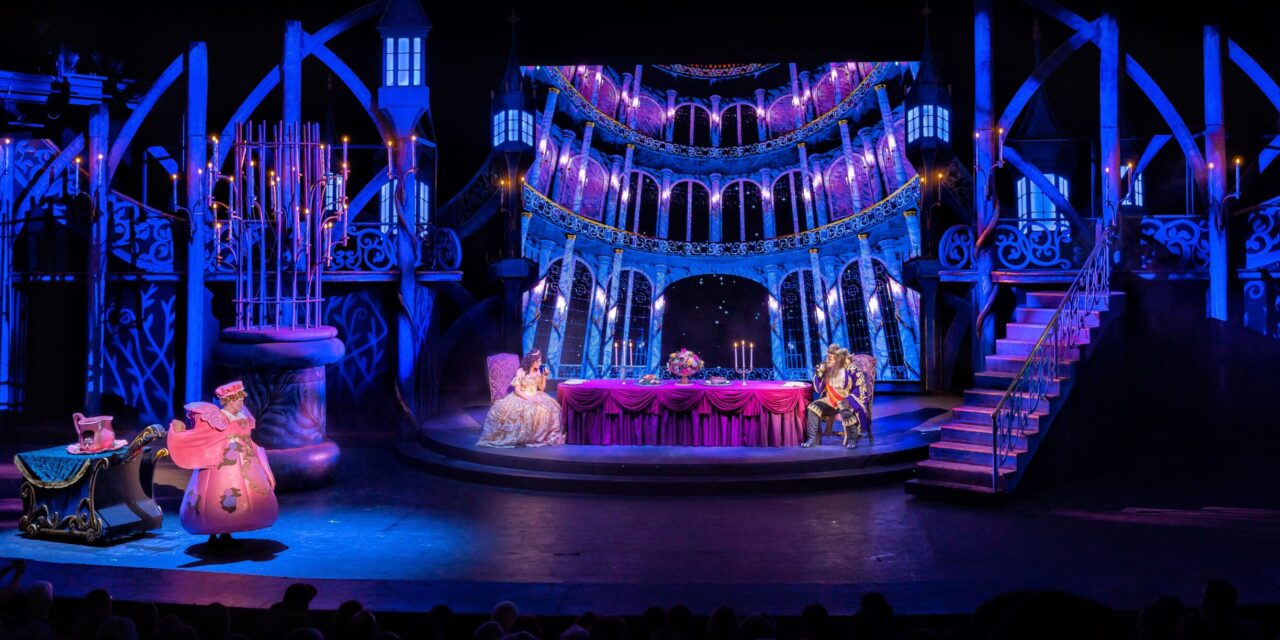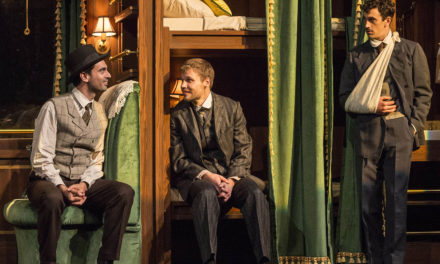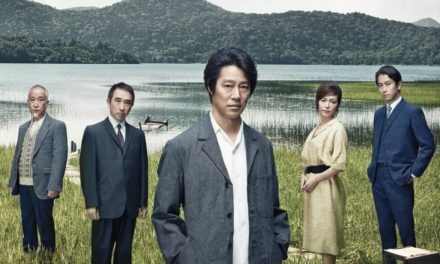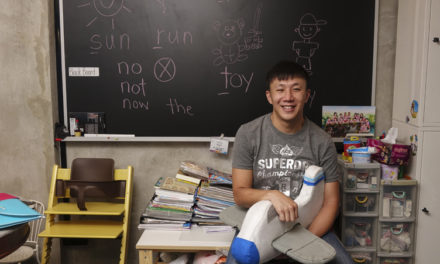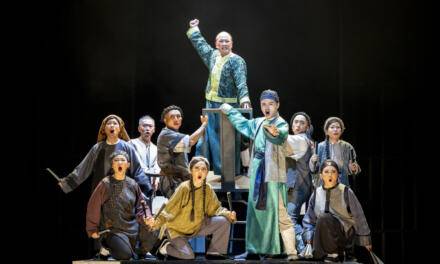For Part 1 see here.
“I think that’s sort of the line I’m always hovering around; Does it feel like just a piece of technology? Is it helping or is it hurting the story?”
I continue my conversation on designing for the stunning Tuacahn Amphitheater with Steven Royal who was tasked with creating the video projections for Tuacahn’s summer production of Disney’s Beauty and the Beast. Steven is also credited as the associate set designer on this production with Adam Koch. With Steven, I discussed his creative process on designing video projections – an immersive design element becoming more prevalent in commercial theater – and the opportunity to design for the unique space of Tuachan:
Colden Lamb: Where did your interest in designing video for the stage come from?
Steven Royal: I had been dabbling in video projections for a few years, and after designing sets for the past eight years or so, Adam Koch and I became keenly interested in the ways in which video projection can enhance the storytelling aspect of a production in a way that modern audiences expect, while still bringing the magical elements that you can only get in the moment of live theater.
As screens get bigger on the stage, the more the content becomes the scenery. So having a hand in both aspects of the visual design seemed like a natural extension of what we were already doing.
CL: What is your working relationship like with set designer Adam Koch?
SR: Adam and I first met working on the set design for a production of Miss Saigon in Washington DC. There was a small projection element that I created for that show. Our working relationship has been many different things; we’ve collaboratively worked on many designs over the last eight years, I’ve directed shows that Adam has designed and I’ve assisted him on designs for shows of all sizes. Overall, our working relationship has been fantastic, our design skills complement each other very well.
CL: Was this your first time working at Tuacahn?
SR: Beauty and the Beast was our third show at Tuacahn. Previously we did Rodgers and Hammerstein’s Cinderella in 2018, and Disney’s The Little Mermaid in 2019.
CL: What is it like designing for this unique space?
SR: One of the mission statements at Tuacahn references the majesty of the canyon in which that theater resides and striving to do work that matches that feeling of majesty. It’s truly remarkable to know that only twelve inches of rock was moved to make that Amphitheater and that it’s been there for millions of years as a natural performance space. So matching that sense of awe is always a challenge, and one of the joys that you get when you work there, especially since audience members have such high expectations for Tuacahn musicals.
Some other joys include being able to fly actors above the audience, or blow things up in terms of spectacle compared to a small indoor theater space. The challenge is the logistical factor of having all the shows running in repertory and creating an interesting set that can be easily set up and come apart repeatedly for several months by the carpenters. Another challenge is creating a design that can look visually stunning in the daytime as well at night.
It’s a long way of saying it’s an incredibly inspiring place to work and it presents less challenges than a traditional theater might, however the solutions are typically a bit more outside of the box.
CL: Can you discuss the major screens you use to project your video design on and the software you use for the projections?
SR: We have one major LED screen upstage center that is used for all of the shows this season at Tuacahn and, specifically for Beauty and the Beast, we have smaller “magic” screens that are hidden inside the set. The screens are all driven by a software called disguise, formally known as d3.
The content was created in Vectorworks, Cinema4D and After Effects. We created many 3D Environments that could extend our physical set. Inside this environment, we could move the camera to match the action onstage. An example of this is when Maurice leaves for the fair with his invention and the camera follows him from his house to the woods in the same direction he is going on stage. It all blends together in a way that makes the audience feel like it’s all happening seamlessly.
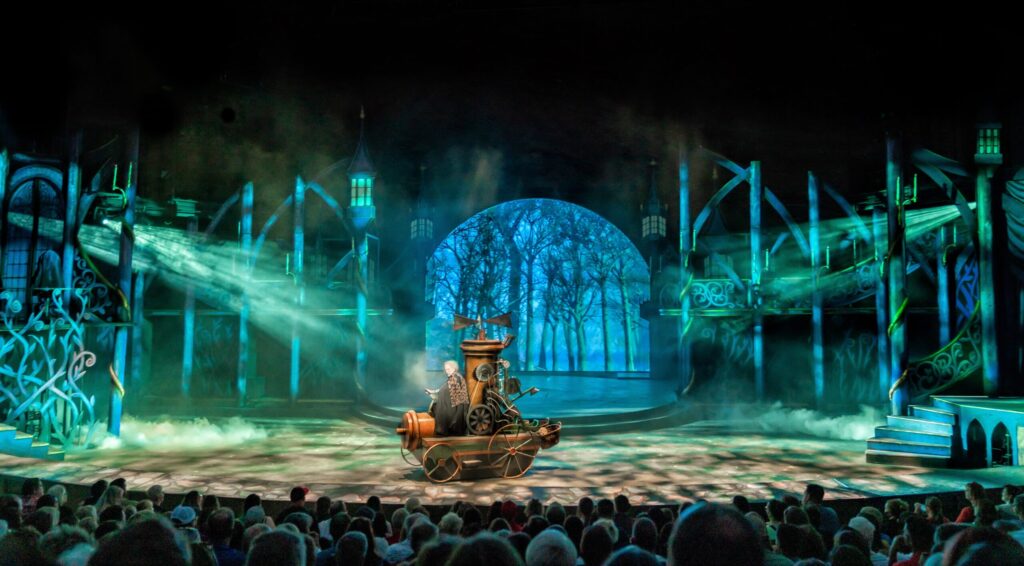
Bryan Dobson in Tuacahn Ampitheater’s production of Disney’s Beauty and the Beast. Set Design by Adam Koch, Lighting Design by Cory Pattak, Video Projections by Steven Royal, Costume Design by Ryan Moller, Choreographed by Robbie Roby and Directed by Michael Heitzman. Photo credit and permission by Cory Pattak.
CL: Were there any challenges in creating a video projection that is consistent with the other design elements?
SR: It goes back to my training in scenery and painting backdrops. The art of the painted backdrop is really how to illustrate and heighten a setting for the stage. With video and projection, the backdrop can now change to match the rest of the stage picture moment to moment without having to bring in another drop.
An element that was in our sketches from the beginning was this idea of a landing pose for the screen to be a projection of a rose colored glass window frame, similar to what was in the prologue and ending of the original film. This window frame could then be used consistently throughout the show to tell the audience where they are or give them a vantage point such as looking over the town or into the castle. This ties back to having the video and the set design coming from the same place rather than being in opposition, they are trying to be in harmony with each other.

The company of Tuacahn Ampitheater’s production of Disney’s Beauty and the Beast. Set Design by Adam Koch, Lighting Design by Cory Pattak, Video Projections by Steven Royal, Costume Design by Ryan Moller, Choreographed by Robbie Roby and Directed by Michael Heitzman. Photo credit and permission by Cory Pattak.
CL: Would you care to discuss your creative process for the video projections?
SR: From the end of 2019 to the spring of 2021, this show had a lot of starts and stops due to the world events of last year. Knowing that I was going to have a longer time span to work on the video elements, I went back in and looked at places I could really punch up the design elements in order to make something even more special for the audiences members who had been waiting just as long to sit in those seats as we had been waiting to get back to work. We really wanted to give the audience something extra special. I did this by taking extra time to continuously build out the 3D worlds of the village, the castle and all the places in between.
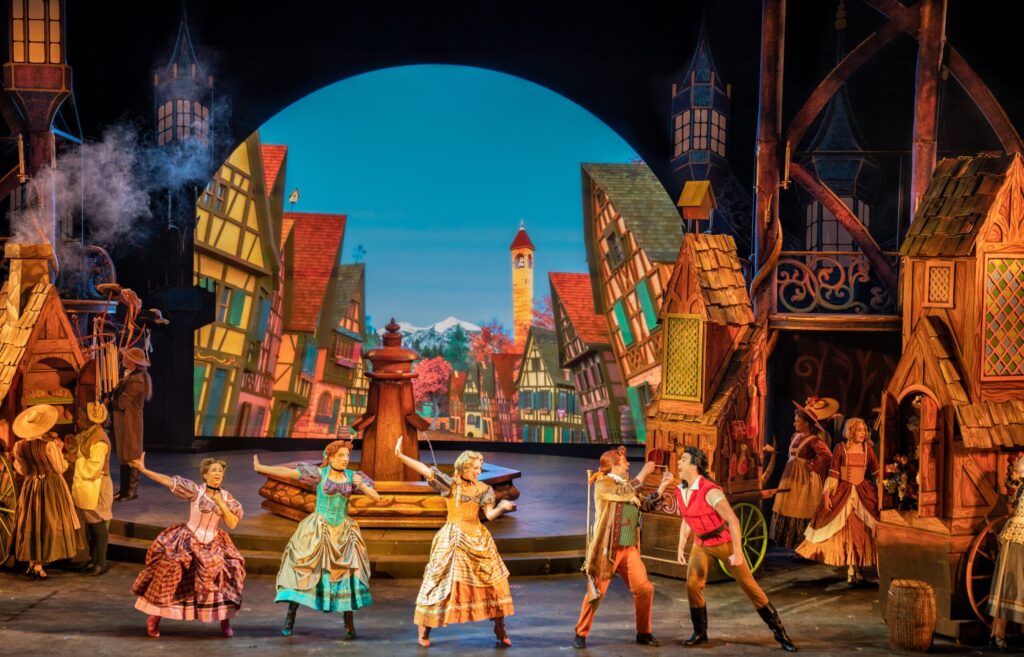
Rachel Perlman, Drew Lake, Ashley Agrusa, Elliot Peterson, Todd Dubail and the company of Tuacahn Ampitheater’s production of Disney’s Beauty and the Beast. Set Design by Adam Koch, Lighting Design by Cory Pattak, Video Projections by Steven Royal, Costume Design by Ryan Moller, Choreographed by Robbie Roby and Directed by Michael Heitzman. Photo credit and permission by Cory Pattak.
Adam and I worked with our director Michael Heitzman and our choreographer Robbie Roby by looking at pictures of the model with the video in it in order to figure out transitions in addition to the blocking of the action within the scenes for the actors and set pieces. After we got through that step, I went back to the 3D software and began rendering. In March, I began rendering the 25,000 frames and 14 minutes of raw animation that’s within this production. It was a great amount of work for a lot of computers to render and composite all those frames.
Although the process was longer than is typical for a regular production, I wanted to take advantage of the extra time in order to heighten the design. It was my hope as well as Adam’s to give as much as we could, visually, to this project.
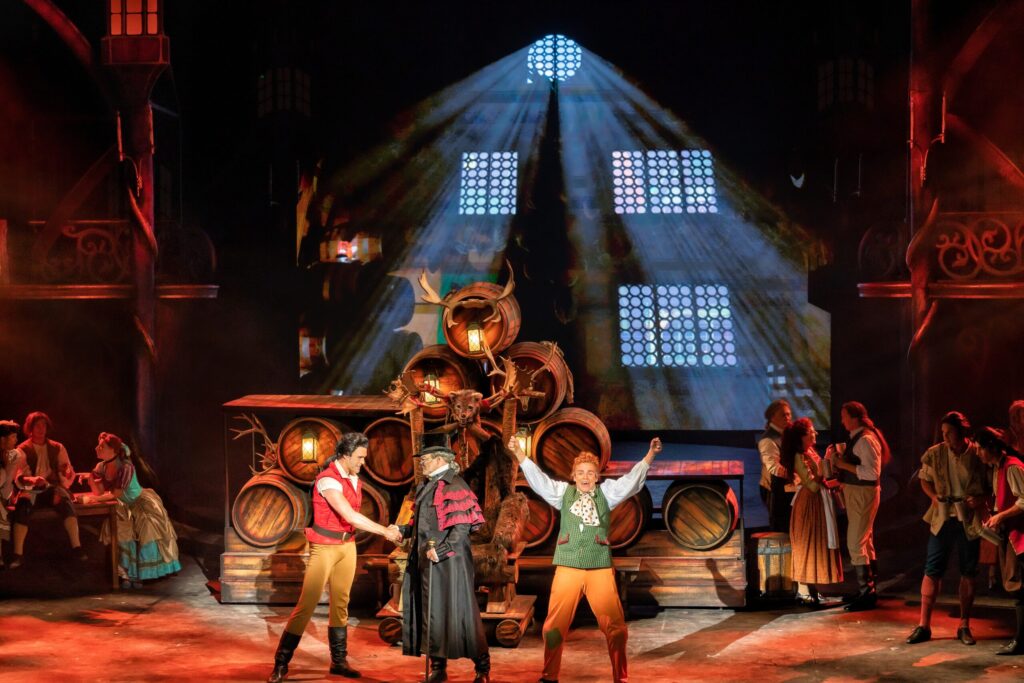
Todd Dubail, Michael Scott Harris, Elliot Peterson and the company of Tuacahn Ampitheater’s production of Disney’s Beauty and the Beast. Set Design by Adam Koch, Lighting Design by Cory Pattak, Video Projections by Steven Royal, Costume Design by Ryan Moller, Choreographed by Robbie Roby and Directed by Michael Heitzman. Photo credit and permission by Cory Pattak.
CL: Throughout the show, does your projection have to be in sync with the live music and if so, how do you ensure that it lands on the right musical cues every night?
SR: For many moments of the show, the orchestra, sound, video, and lighting departments are all synced to a TimeCode in order to be on the same beat at the same time every single night. This metronomic click track has been recorded and approved by the creative team (as far as tempos) and is locked in at every performance. There were many moments within the scenes of the show that all of us on the creative team had to identify and it took a lot of work to get all our elements to sync up at the right downbeat every night. Even our fireworks that go off at the end of “Be Our Guest” are timed to the click track in order for them to go off at the last beat of the number. The TimeCode also helps regulate the show in places where there could be inconsistencies and indicates where to hit a really important musical beat.
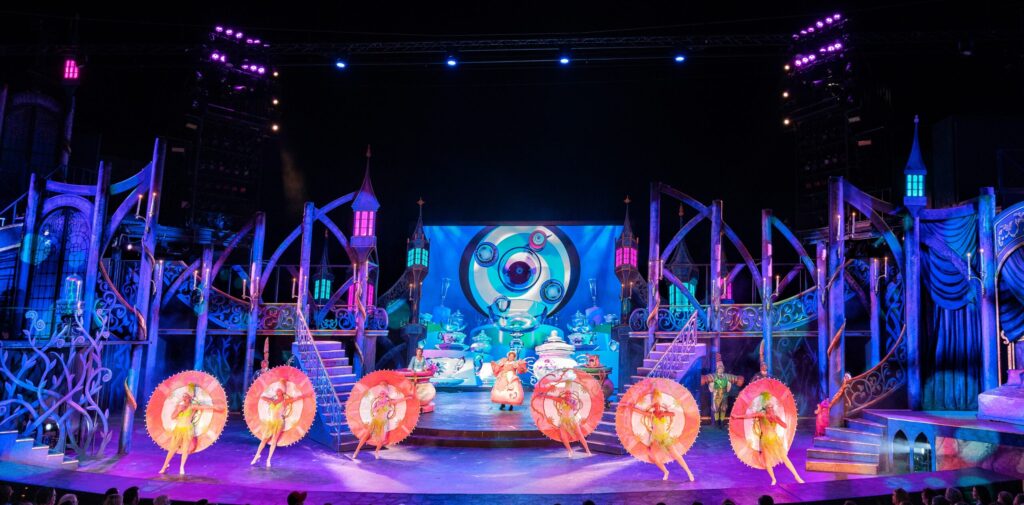
Crystal Kellogg, Alexandra Melrose, Charlie Stover and the company of Tuacahn Ampitheater’s production of Disney’s Beauty and the Beast. Set Design by Adam Koch, Lighting Design by Cory Pattak, Video Projections by Steven Royal, Costume Design by Ryan Moller, Choreographed by Robbie Roby and Directed by Michael Heitzman. Photo credit and permission by Cory Pattak.
CL: Tuacahn Amphitheater is located within the Southern Utah desert and can get extremely humid during the summer. Does that have an effect on the screen that is used?
SR: The LED screen that Tuacahn uses for all the shows this season is made to take a beating in the outdoor weather and still look great. The heat, of course, is a problem because the theater is in the middle of a desert and the black rubber stage itself can get up to 130 degrees just on residual heat. The 30K projectors that hang above the audience come equipped with air conditioner boxes dedicated to each projector to ensure they don’t overheat. The screen is moved when setting up and tearing down shows within the repertory, and prior to each performance the screen is tested.
If there does happen to be an issue with the screen we reset the LEDs by using a tennis ball on the end of a long paint stick which fixes the problem 99% of the time. Sometimes modules do have to be replaced, but that problem becomes more obvious when the screen is being tested at the beginning of the show. Within that wall there are tiles and within those tiles there are smaller modules and those modules are replaced frequently. Each title is part of the structure of the screen itself and never moves. The modules are similar to the lighting instruments that are used in the show in the sense that they too, wear and burn out.
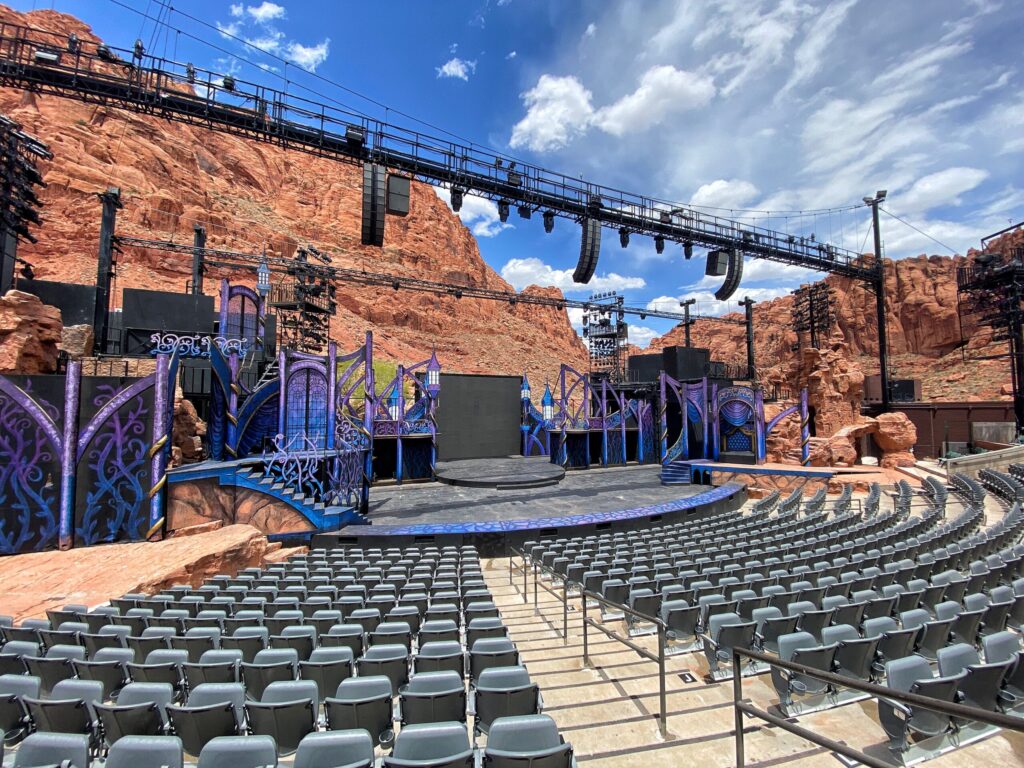
The stage of Tuacahn Ampitheater’s production of Disney’s Beauty and the Beast. Set Design by Adam Koch, Lighting Design by Cory Pattak, Video Projections by Steven Royal, Costume Design by Ryan Moller, Choreographed by Robbie Roby and Directed by Michael Heitzman. Photo credit and permission by Cory Pattak.
CL: Was there any difference designing and doing tech for this show under COVID protocols enacted?
SR: The entire Tuachan company was vaccinated, tested, and all of us were in masks. The theatre is so large, we were already socially distanced at our tech tables pre-pandemic!
CL: Is there anything else you would like to mention about your experience working at Tuacahn?
SR: I would just like to simply acknowledge the gigantic hoop the entire staff and company of Tuachan had to continuously jump through in order to make these shows possible this year, not only for their audiences, but also for all of the artists from all over the country. The Tuachan staff knew they had to bring back theater, not only for their audience and staff, but also for all the economic tourist trade Tuacahn brings to the surrounding community of St. George. It was an incredible act on Tuachan’s part to continuously move boulders in order to make this season come alive and it is always a great honor to work for them.

Photo Permission by Steven Royal
Steven Royal has created experiences all over the world working as Creative Director for The Becker Group and Global Experience Specialists including set designs for Harry Potter: The Exhibition, currently in its eighth year touring the globe. Other nightlife and event clients include AOL, Google, Target, WWD, A&E, The History Channel, The Saint at Large and Heritage of Pride NYC including designs for Pier 26 and the 30th annual Pier Dance in New York City with Adam Koch. Additionally, Steven has collaborated with Adam on over 150 musicals, plays and live events including the acclaimed productions of Dreamgirls (Deoul, Korea), Titanic the Musical (Serenbe Playhouse) and West Side Story (Maltz Jupiter Theatre). Other design credits include: Gross Indecency (Directed by Moises Kaufman), Broadway Bares (Directed by Jerry Mitchell) and Lincoln Center Originals (Directed by Lonny Price). Steven is the recipient of the Helen Hayes Award for Outstanding Director of a Musical for Bat Boy: The Musical in Washington, D.C. More online at: adamkochassociates.com
Colden Lamb is a Southern California based actor. He graduated from San Diego State University in 2018. coldenlamb.com
This post was written by the author in their personal capacity.The opinions expressed in this article are the author’s own and do not reflect the view of The Theatre Times, their staff or collaborators.
This post was written by Colden Lamb.
The views expressed here belong to the author and do not necessarily reflect our views and opinions.

